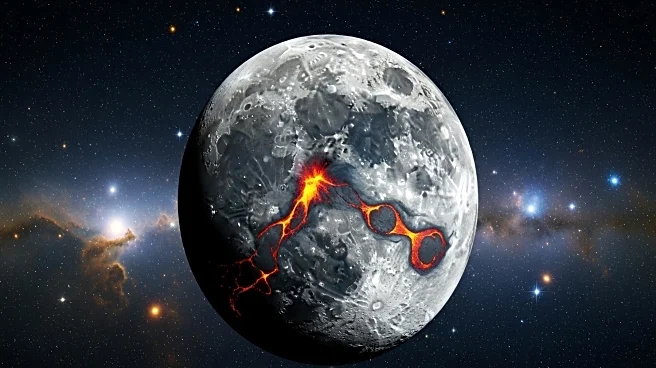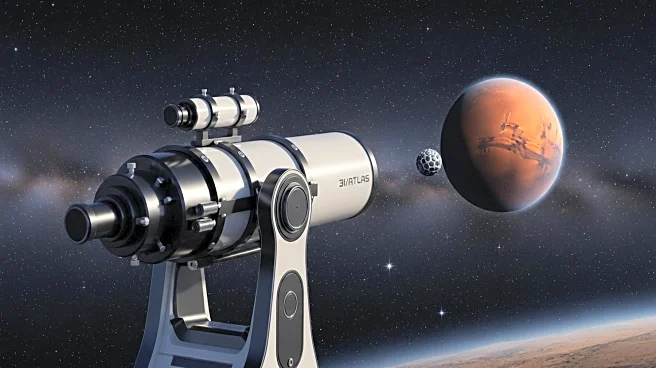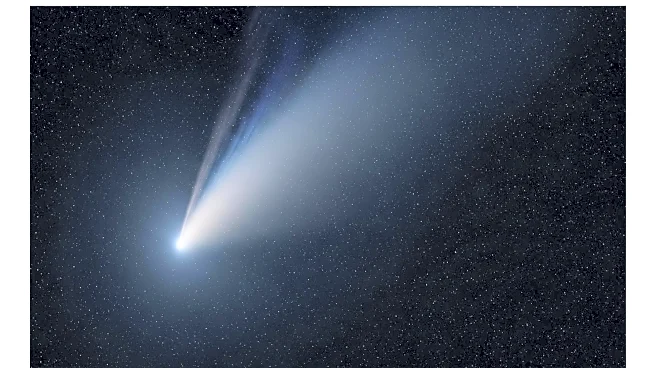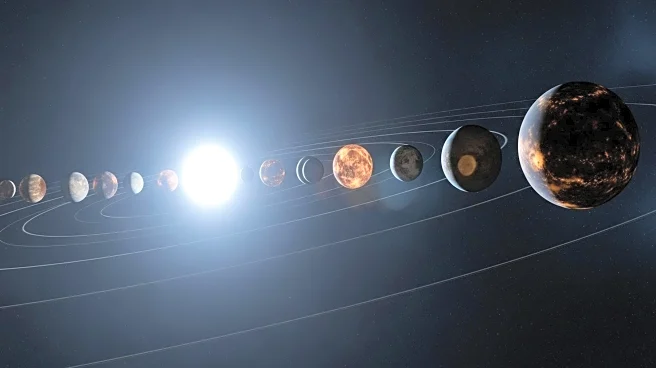What is the story about?
What's Happening?
Astronomers have proposed a new hypothetical planet, dubbed Planet Y, to explain the unusual tilt of orbits in the Kuiper Belt, a region of icy bodies beyond Neptune. The study, led by Amir Siraj from Princeton University, suggests that an unseen planet, possibly smaller than Earth but larger than Mercury, could be influencing these orbits. The research, published in the Monthly Notices of the Royal Astronomical Society: Letters, is not a discovery of a planet but rather a puzzle for which a planet is a likely solution. The Kuiper Belt's tilt has sparked debate among astronomers, with the Vera C. Rubin Observatory expected to provide more clarity in the coming years.
Why It's Important?
The potential existence of Planet Y could significantly alter our understanding of the solar system's structure and formation. If confirmed, it would add a new dimension to the study of planetary dynamics and the history of our solar system. The discovery could impact future astronomical research and exploration, as well as our understanding of the Kuiper Belt, which remains largely unexplored. The Vera C. Rubin Observatory's upcoming survey could provide definitive evidence, influencing both scientific theories and public interest in space exploration.
What's Next?
The Vera C. Rubin Observatory is set to begin its 10-year survey of the night sky, which could confirm the existence of Planet Y. This telescope will offer unprecedented clarity in observing the outer solar system, potentially discovering thousands of new Kuiper Belt objects. The data collected will help test the predictions made by Siraj and his team, and could lead to a deeper understanding of the solar system's formation and dynamics.
Beyond the Headlines
The search for Planet Y highlights the ongoing debate in astronomy regarding hidden planets in the solar system. It underscores the importance of technological advancements in telescopes and observational techniques, which are crucial for exploring distant regions like the Kuiper Belt. The study also reflects the collaborative nature of scientific research, with contributions from various institutions and researchers worldwide.
AI Generated Content
Do you find this article useful?














